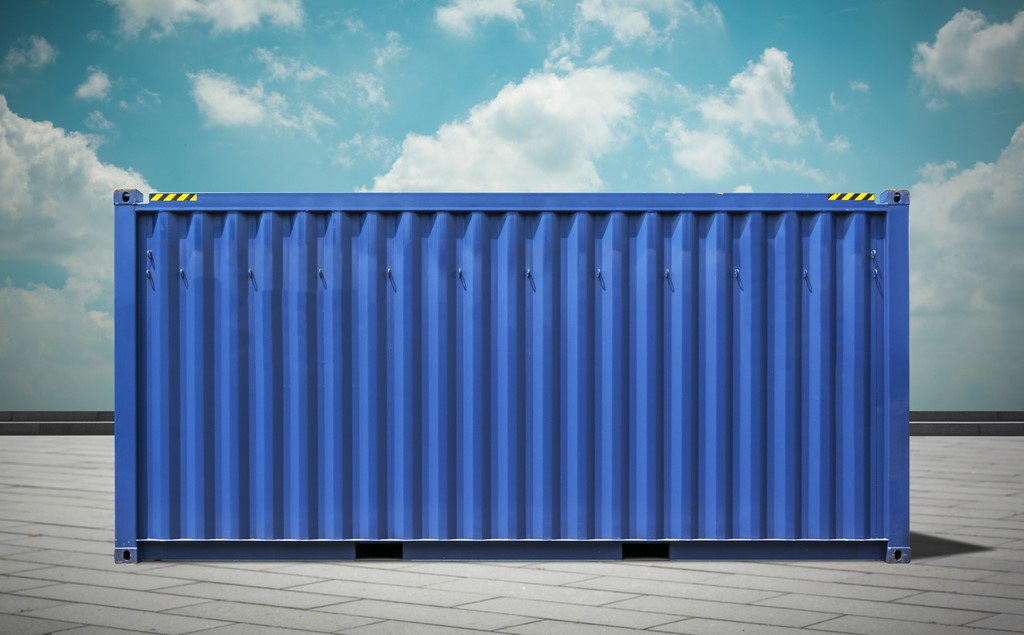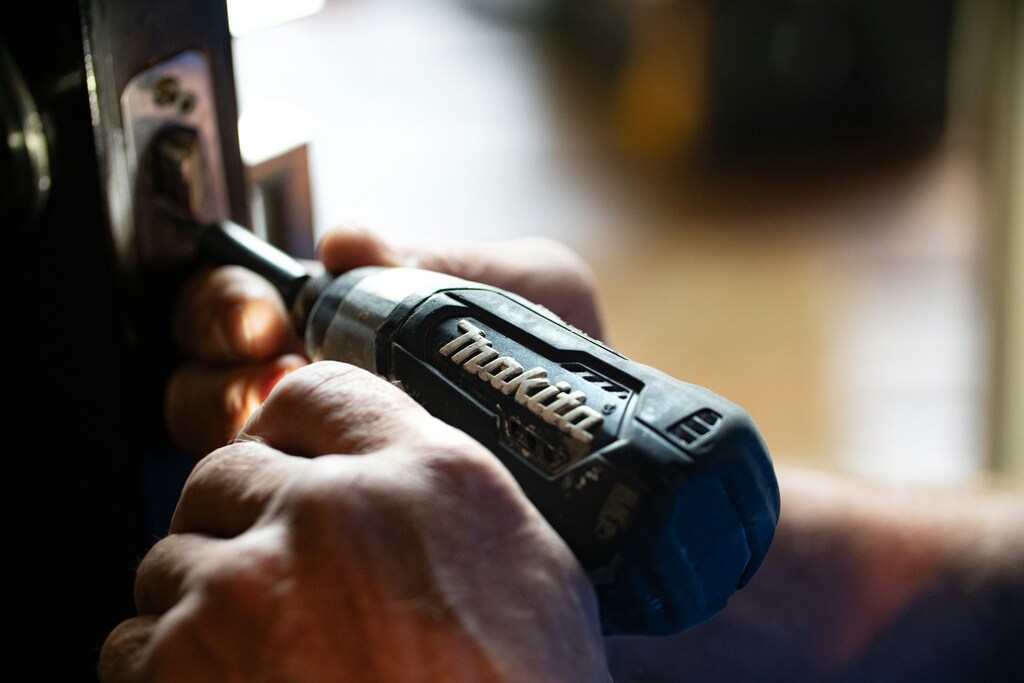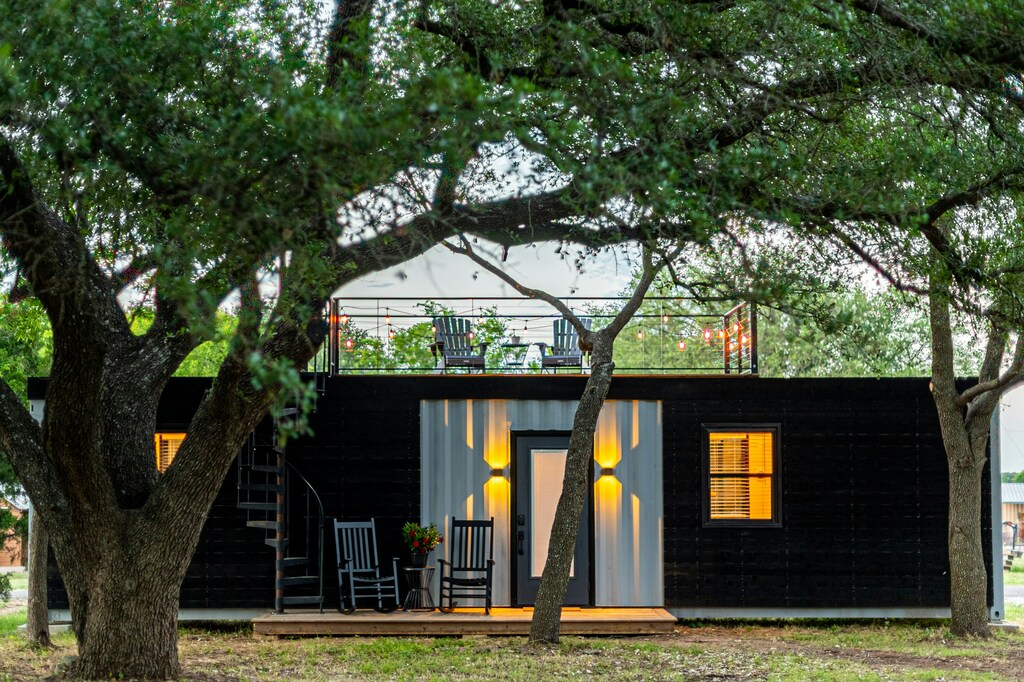In case you haven’t known about it, a steel container house is a prefabricated building made of containers. This building is a non-permanent sturdy building that has good durability.
Building a steel container house has become popular in recent years with sustainable design ideas. Not without a reason, a shipping container has a convenient size and simplicity, making it a natural fit for housing.
Steel containers offer space in a boxy piece. You can stack and combine them to create multiple rooms to have a larger space, creating a home in itself.
However, before you decide to use your savings to build your dream steel container house, make sure you have considered the following nine points!
1. Assess and Check the Container Directly
It is crucial to see the container in person before buying one and committing to building a container house. Physically seeing the container gives you a better understanding, making it a much smarter investment for the home project.
Moreover, not all shipping containers are in the same condition. Some might have rust, dents, or structural damage, which could affect their usability and durability as part of a home. Seeing a container in person allows you to evaluate whether it’s worth the investment.
Also, consider how your container home will look and feel in the long term. Especially when you are about to modify it like cutting windows or doors. It may need to be done in specific areas for structural integrity. Inspecting the container firsthand can give you insight into what kind of customization will suit your container best.

2. Know the Difference Between Each Container Type
Although all containers may look the same to you, they are not, especially the High Cube ones. While standard shipping containers are 8.6’ tall, the High Cube containers have an extra 1’ in height. Therefore, if you plan to have a higher ceiling, the High Cube ones might suit you the best. However, since this kind of container is bigger, the price will be slightly higher than the standard ones.
3. Know the Relevant Rules and Regulations
Each US state has its own rules and standards when it comes to building a house. These can vary significantly depending on your location, so it’s crucial to research and follow the specific laws in your area.
In this process, the first thing is to Consult a Professional as it is a good idea to work with an architect or builder who understands local regulations. Then, talk to your local building department before the project starts. They can help you understand what is possible in your area and guide you through the permitting process.
Here is a general overview of the key regulations you should know:
- Zoning Regulations: dictate the type of buildings allowed in a specific area.
- Building Codes: vary by state and city, but many follow national standards such as the International Building Code (IBC) or International Residential Code (IRC) to ensure that your container home is safe and habitable.
- Permits: You will need building permits, septic or sewer permits, and electrical, plumbing, and mechanical permits to build a steel container house.
- Health and Safety Standards: To make it livable, your container house needs to have ventilation and insulation and meet energy efficiency standards.
- Waste Disposal: You will need to address waste management for your container home, including waste disposal systems for sewage, water drainage, and composting systems.
- Transportation and Site Access: Depending on your location, you may need special permits for transporting large items like containers on public roads, especially if you have narrow streets or bridges.
- Homeowner Association (HOA) Rules: check these rules and obtain approval before starting your project if your property is part of an HOA. They have strict guidelines about what types of structures are allowed on your property.
- Local Regulations: Some cities or counties may have specific regulations for alternative homes. For example, Los Angeles or Austin may be more open to the idea of a container house, while others might have more restrictive rules.

4. Hire a Skillful Contractor
Knowledge of container construction is still uncommon among contractors. Research carefully, and try to find someone with experience. Hiring a skillful contractor who can help with the whole process is better than having one to source and modify the container and another to finish the inside.
Since container homes are non-traditional and come with unique challenges, working with someone experienced in this type of construction can make a huge difference. Containers are strong, but cutting into them – whether for windows, doors, or custom designs – can compromise their structural integrity. A skillful contractor understands the importance of proper welding, cutting, and joining techniques, which are crucial to maintaining the overall stability and safety of the structure.
Skillful contractors will also help you with building codes, zoning laws, and safety standards for container homes can be complex and vary by location. The most important thing, they will also be able to navigate the permitting process, avoiding potential delays or fines due to overlooked paperwork or mistakes in design.
Overall, their expertise can save you time, money, and frustration, and ultimately, ensure that you end up with a home that meets your needs and stands the test of time!
5. Don’t Expect to Make Big Savings
One thing to remember when building a house out of a container is to know which costs to avoid and which ones you must embrace. Do not expect that you will save more money while doing so. The extra cost associated with welding, insulating, and finishing a multi-container home might end up being just as expensive as a regular house.
You need to keep your expenses within reason. However, you still can make your home as comfortable and attractive as you want.
6. Minimize Welding
Welding is often necessary for structural modifications such as cutting openings and connecting multiple containers. It takes a long time and is expensive, so keep it to a minimum. Therefore, minimizing the amount of welding in a container home construction project can save both time and money, while also reducing the complexity of the build.
There are several strategies you can use to reduce the amount of welding needed such as thoughtful pre-planning and design. Plan your design around the existing structure of the container to minimize the need for custom modifications. For example, strategically place doors and windows in areas that align with existing container seams, avoiding the need to cut large sections of steel.
You can also use modular design. Instead of combining multiple containers or cutting them into several sections, use single-container designs or pre-fabricated modules that require minimal adjustments. This will reduce the need for extensive welding to join containers together.
7. Know How to Insulate
Steel containers will be unbearably hot during the summer and cold in the winter. Therefore, you need to insulate them. Insulating a container home is crucial for maintaining comfort, reducing energy costs, protecting the structure from moisture, and creating a healthier living environment.
Whether you’re looking to stay warm in the winter, cool in the summer, or simply protect your container from rust and condensation, insulation will play a major role in the longevity and livability of your container home.
When designing your shipping container home, ask your contractor about insulation ideas. By carefully selecting the right insulation material and applying it correctly, you will ensure that your container home remains a comfortable, efficient, and sustainable living space for years to come.
8. Plan for Plumbing and Electrical Wiring at the Beginning
One thing that would have made a big difference would have been to have all the pipework cut out of the floor and roof of the container to easily run the pipes once they were stacked. When designing your shipping container home, make sure you know where the plumbing and electrical lines will enter and leave your home. Proper planning ensures safety, efficiency, cost savings, and structural integrity, while also meeting building codes and regulations.
Plumbing and electrical planning are essential for the success of your container home. By carefully considering your plumbing and electrical systems during the design phase, you will avoid costly mistakes.
Ask your contractor to cut the holes for plumbing and electrical lines before finishing the interior. Doing this can avoid moving your kitchen cabinets to cut a hole to run that one extra pipe you forgot about.
9. Have a Wind-Countering Strategy
Containers have rigid structures. When they fight against the wind, they will produce noise across the surface and cause interior noise. Therefore, a steel container house placed in windy areas will most likely lead to a noisy home.
If you live in a windy area, consider placing your home behind a windbreak or in an area that protects your home from the piercing winds. You can also use baffles and soundproofing to shield your container from the wind. Solid structures like hills and trees can be helpful when it comes to addressing the issue.
Conclusion
Building a container house can be a fantastic and sustainable way to create a unique, cost-effective home. However, there are several important things you should know before embarking on this type of project. By following these tips and making informed decisions, you can ensure that your container home is safe, comfortable, energy-efficient, and functional for years to come.
To build your own steel container house, buy or rent Tradecorp’s container now! Standing at the top of the industry, Tradecorp is widely known for its high-quality containers open for so many creative applications. Fill out our quote form and we’ll guide you in finding the best container for your business goals!

